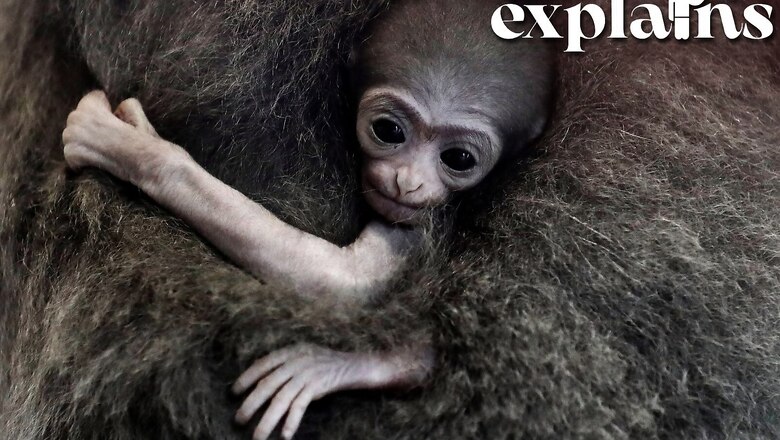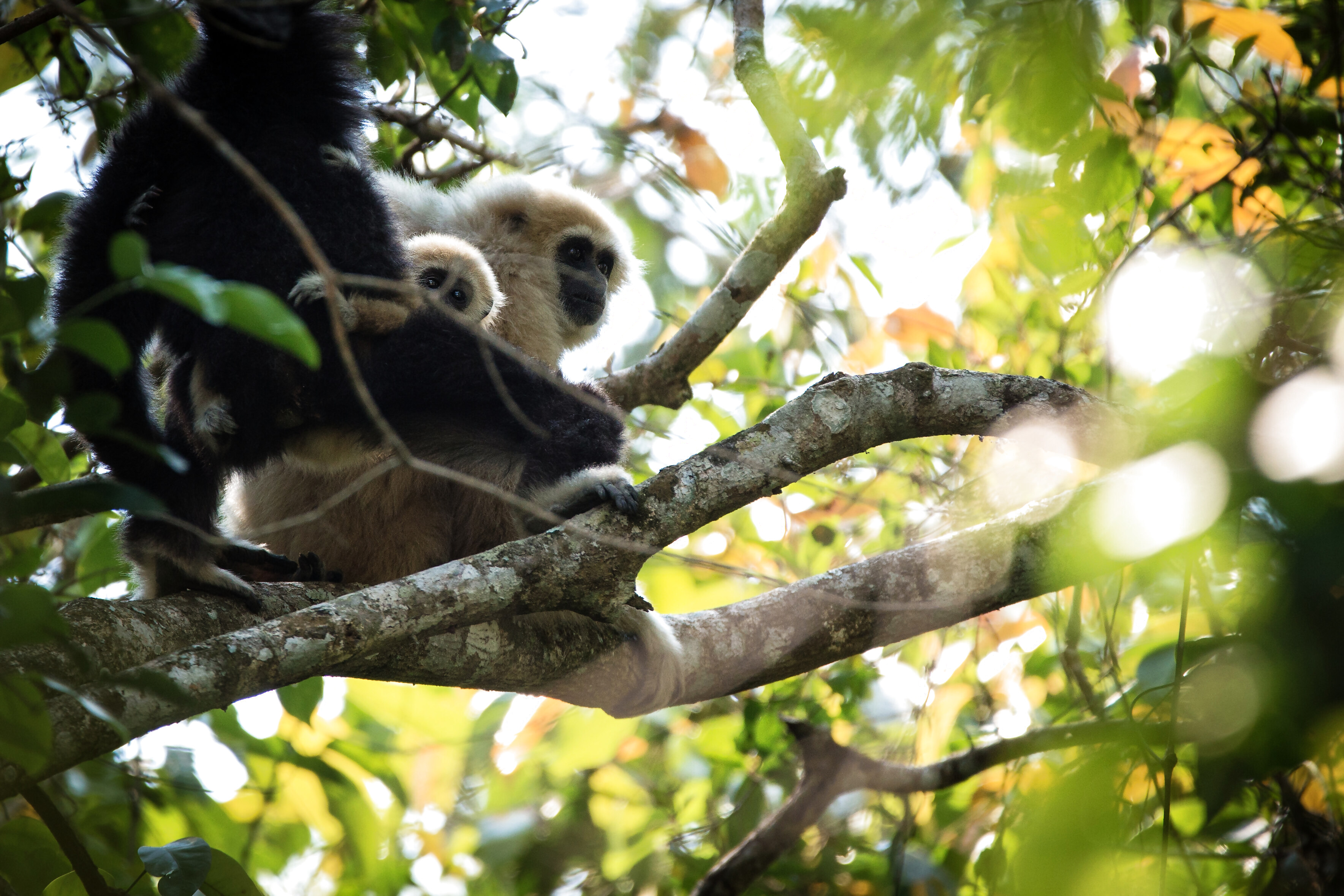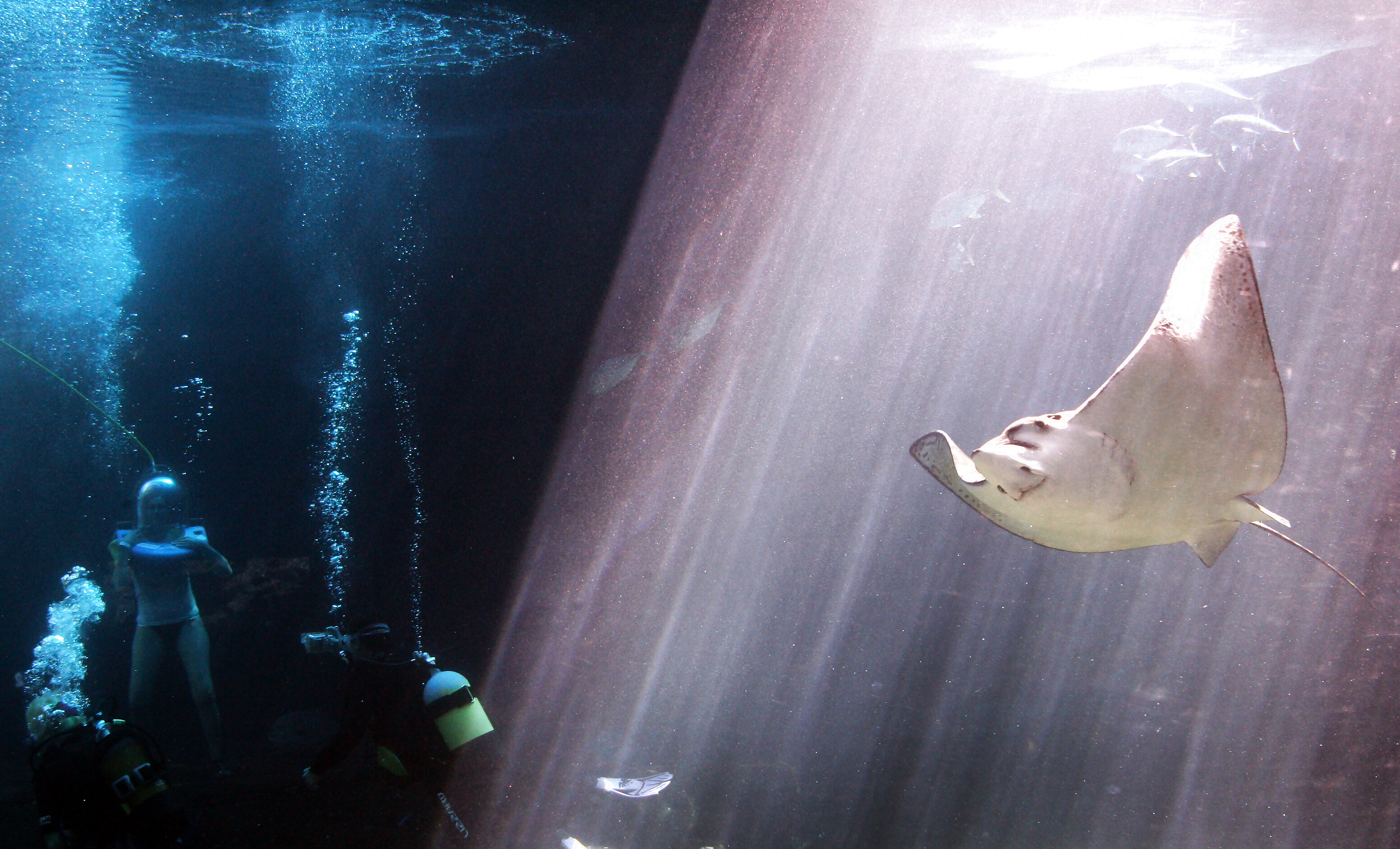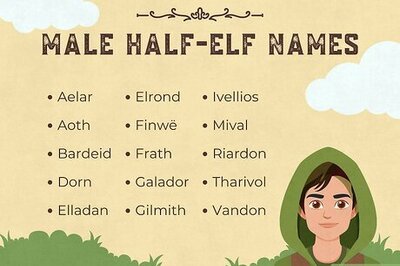
views
When an isolated Gibbon – a type of ape – became pregnant in her cage, zookeepers in Japan were perplexed. Momo, a 12-year-old white-handed gibbon, surprised her keepers at the Kujukushima Zoo and Botanical Garden in Nagasaki when she gave birth despite having no known male companionship in February 2021.
Despite the fact that some of her neighbours are guys, their cages are separated by stout bars and crinkly chicken wire fencing.
So How Did She Give Birth?
Following a DNA test on her offspring, the zoo has determined who the father is – and even has a theory about how the gibbons mated, a report by CNN said.
The test revealed that the father was It, a 34-year-old agile gibbon who was in the same enclosure as Momo at the time she became pregnant.
The zoo informed CNN on Friday that Momo and It had mated through a small hole in a steel plate separating their enclosures. The hole was approximately 9 millimetres (0.3 inch) in diameter.

The unnamed newborn ape currently weighs roughly 2 kilos (4.4 pounds) and is “developing healthily” under Momo’s tender care, according to the zoo.
“It is a precious life born into the world, we will continue to take good care of him and hope that he will live a healthy long life,” Hideki Hisano, deputy director of the zoo told CNN.
The Father
After engaging a researcher to analyse the DNA in faeces and hair samples taken from Momo, her children, and four probable dads last year, the Kujukushima Zoo and Botanical Garden announced the father’s name on Tuesday.
Itoh, a 34-year-old agile gibbon, is the father, said a report by Firstpost.
The zoo’s superintendent, Jun Yamano, told VICE World News that the perforated partition board has been replaced with a barrier with no perforations to prevent unwanted pregnancy.
Such mating practises, he explained, are “unheard of.” He explained that the zoo normally couples the gibbons after some trial and error to get them acquainted.

According to VICE, gibbons chose mating partners in the wild based on physical traits, interpersonal interactions, and vocalisations such as the elaborate tunes they sing.
‘Virgin Birth’ in Animals
Some animals, including humans and all other mammals, require a male and a female to breed. Others, such as whiptail lizards, are asexual and can reproduce on their own. Certain organisms, such as sawfish, snakes, and sharks, can do both. It allows for reproduction when there aren’t enough males nearby. The resulting children, however, are less genetically diverse than their sexually generated counterparts, which can be harmful to health, says a 2018 report by IFL Science.

Such a case was seen in 2018 in Australia, when a ray gave birth while not having been around a male ray in almost nine years.
She employed a mechanism known as parthenogenesis (literally “virgin origin” in ancient Greek), which is extremely rare in the animal realm. Parthenogenesis is the process by which an embryo develops without the requirement for male sperm to fertilise it, the report said.
“It’s a really rare occurrence among vertebrates like Eagle Rays, so this is a very spectacular arrival for Sea Life Sydney Aquarium,” said Adam Stowe, an associate professor at Macquarie University, in a statement.
Freckle’s ray team observed significant changes before she gave birth. Her stomach was expanding, she was breathing and swimming quicker, her appetite had grown, and she was less keen to participate in training sessions, all of which indicated that she was protecting something. However, because there was no male eagle ray in her tank, the aquarists initially concluded she couldn’t be pregnant.
Gibbons: an Endangered Species
Gibbons are distinctive tiny apes known for their energetic vocal performances, with 20 species all indigenous to South and Southeast Asia, a report by IUCN says. Gibbons play a crucial part in seed distribution, which helps to keep the woods they live in healthy and benefits the communities that rely on forest resources.
Poaching is one of the most serious dangers to gibbon populations, whose bones are often employed in traditional medicine as’monkey bone balm’ or tonic additions. The decline in gibbon population is also mostly attributable to habitat loss as a result of urbanisation and land change, primarily for agricultural purposes.
Gibbons are one of the most endangered primates in the world, with five species listed as Critically Endangered, 14 as Endangered, and one as Vulnerable on the IUCN Red List of Threatened Species.
With inputs from CNN
Read all the Latest Explainers here


















Comments
0 comment